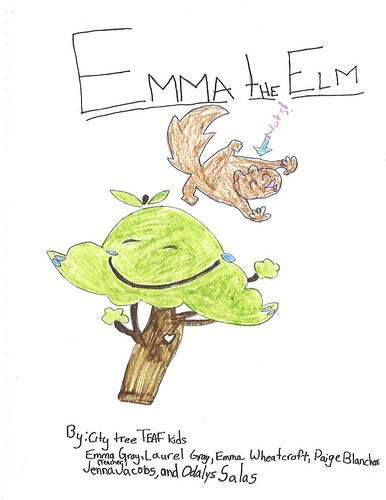How city trees cool & clean our air

By Neva Knott
“Trees breathe carbon dioxide, a greenhouse gas, most of which comes from vehicles. Other particulate matter is emitted into the air by industry, fires, fuel burning, agriculture, and all kinds of human activity. As trees take up CO2 and other pollutants they filter the air—at the rate of 25 million pounds a year here [in Portland, Oregon]. The larger and healthier the tree, the more filtration. Think of the old neighborhoods full of maples, cherries, and tulip trees, working hard to help us breathe. And interestingly, researchers have discovered that urban trees begin to store carbon at an earlier age that do rural or wilderness trees.
“The economic aspect of air filtration, mainly that of carbon storage, comes in the form of carbon trading. More and more, industries that send the pollutants into the air pay tree growers for the air-cleaning capacity of their trees. Cities are now able to compete in this market. In fact, buyers often pay more for credits that are attached to sustainable projects with local, social benefits, such as urban tree-planting programs. Another program that works with trees to clean the air of carbon is the Municipal Trees Restoration Program. Twenty-five cents of each Oregon vehicle registration fee is allotted to the program. The money is then used to plant trees in highway rights-of-way. In this way, trees are considered part of the transportation system. It takes about 20 trees to offset driving one car for 60 miles each day.
“A full tree canopy provides shade and lowers the overall temperature of a place. In the city, this is important socially—ever step into the shade of a tree on a hot day? Such cooling also works to against global warming. Cooling is particularly important in cities where heat islands occur where the lack of trees and other vegetation combined with pavement, buildings, and other human-made, sealed structures disallow the flow of energy and air. A 2006 study of Portland’s July temperatures reported a 20-degree difference between the well-treed Northwest quadrant and an area designated as an UHI [urban heat island].”
For this week’s news about climate change from U.S. Congressman Earl Blumenauer and about city trees’ role in slowing climate change from NPR’s “Talk of the Nation,” see our blog story A Hot Topic: Trees in our Cities.
This is the third in a series of Growth Ring stories excerpted from Friends of Trees Crew Leader Neva Knott’s blog Stand of Trees, which she wrote for her master’s thesis. Read how city trees clean our water here.
